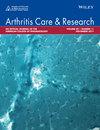Sequence Analysis to Phenotype Health Care Patterns in Adults With Musculoskeletal Conditions Using Primary Care Electronic Health Records
Abstract
Objective
The aim of this study was to apply sequence analysis (SA) to phenotype health care patterns of adult patients with musculoskeletal (MSK) conditions using primary care electronic health records and to investigate the association between these health care patterns and patients’ self-reported outcomes after consultation.
Methods
Data from the Multilevel Integrated Data for musculoskeletal health intelligence and Actions program conducted in North Staffordshire and Stoke-on-Trent, United Kingdom, was used. The study included patients aged ≥18 years who consulted primary care for MSK conditions between September 2021 and July 2022. SA was employed to categorize patients with similar health care patterns in primary care in the five years before their index consultation in respect to consultations, analgesic prescriptions, imaging, physiotherapy, and secondary care referrals. Associations of sociodemographic characteristics and self-reported outcome with clusters were determined.
Results
In total, 1,875 patients consulting primary care for MSK conditions were available for analysis. SA identified five clusters of previous health care patterns among patients with MSK conditions, including “increasing consultation and analgesia” (5.60%), “low consultation and health care use” (57.39%), “high consultation and health care use” (8.32%), “low consultation but high analgesia” (13.01%), and “low consultation but moderate health care use” (15.68%). Patients in the “high consultation and health care use” group were predominantly female, were older, had obesity, had more comorbidities, and lived in the most deprived areas compared to those in the “low consultation and health care use” group. Additionally, self-reported outcomes varied significantly among clusters, with patients in the “high consultation and health care use” group reporting worse self-reported outcomes.
Conclusion
This analysis identified five distinct clusters of health care patterns for patients with MSK conditions in primary care and observed substantial variations in patients’ self-reported outcomes and sociodemographic profiles across these different groups of patients.


 求助内容:
求助内容: 应助结果提醒方式:
应助结果提醒方式:


